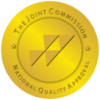MAT Treatment at Northern Illinois Recovery
Medication-assisted treatment (MAT treatment) refers to the combination of behavioral therapy and medication during recovery. The two elements combine to help treat the person and keep them in treatment longer.
If you’re struggling with drug or alcohol dependency, you know that cravings make overcoming addiction on your own incredibly tricky. For some individuals, managing cravings and reducing the impact of withdrawal symptoms is best accomplished through the strict administration of medications designed to help. MAT is an innovative treatment approach that can help ease the recovery process and prevent relapse.
Sometimes people might be wary of taking medications during treatment because it could lead to further addiction. However, there are many benefits of medication-assisted treatment as an evidence-based therapy that can help the person recover more efficiently and stay on treatment down the road.
Jump to Section
A Closer Look at MAT Treatment
Even after successfully completing detox and treatment, some addicts might find themselves slipping into old habits. These intense cravings and mental issues can begin to resurface and could potentially lead to relapses as well as interfere with the treatment overall.


However, a MAT treatment program offers more than just medication; it provides engaged therapy to help individuals address their underlying mental health issues that contribute to and spring from a substance use disorder. During our MAT treatment, participants can expect to be able to take part in the following therapy programs:
- Cognitive behavioral therapy (CBT)
- Dialectical behavior therapy (DBT)
- Family therapy
- Group therapy
- Yoga therapy
- Trauma therapy
These therapeutic options help individuals learn to identify, address, and surmount the mental health issues they face as they recover from addiction.
What are the Benefits of Medication Assisted Treatment?
There are numerous benefits of medication-assisted treatment, and recovery is often tremendously easier through this approach. Withdrawal is a painful and uncomfortable process, but you can minimize the symptoms with the assistance of medicine.
Once you can overcome a period of withdrawal and beat cravings, you’ll find you can work on parts of treatment like counseling and education. You’re also more likely to avoid relapse once you’re able to move past the withdrawal period without lasting symptoms successfully.
Learning coping skills is also an important part of any medication-assisted therapy program. The first component is dealing with withdrawal, then comes the learning and processing. When receiving the medication-assisted treatment Northern Illinois offers, you’re more likely to avoid relapse. Studies show this to be true.
Why Seek a MAT Treatment Program?
Professional recovery services treat each individual’s personal needs. You aren’t treated as only your addiction. Issues you are currently facing will be addressed in your unique treatment plan. This ensures you are feeling confident and prepared to return to your daily life when treatment ends. You’ll have the skills you need to navigate life without drugs or alcohol.
There are several reasons to seek the medication-assisted treatment Northern Illinois offers. Medication-assisted treatment from a reputable recovery center such as Northern Illinois Recovery can make the entire process much easier on you. Medication-assisted therapy helps you overcome withdrawal symptoms so that you can then focus on learning the skills you need to stay clean.
Having professional staff who care to provide you with support and expert knowledge will increase the likelihood of successful recovery. Also, you’ll gain insight from your peers who are going through a similar experience and understand you.
The MAT Treatment Process
After you’ve taken the first step towards recovery at Northern Illinois, you will be evaluated by one of our trusted and qualified mental health professionals. Here we will determine different factors that’ll dictate your medical-assisted treatment.
The three main factors include:
- Proper diagnosis of the substance use disorder
- Evaluate the severity of the addiction
- Access other co-occurring mental or physical health problems
Are You a Good Candidate for MAT Treatment?
After these factors are accessed, a decision is made whether or not you are a good candidate for medical-assisted treatment. Typically, a good candidate will have met the following conditions:
- An official diagnosis of addiction (alcohol or opioids)
- Full compliance with prescribing instructions
- No psychical health issues that could be exasperated by medication
- Full understanding of alternative options
When to Look at Other Options
There are a few telling signs that a MAT program might not be the right treatment for you. Medication-assisted therapy might not be right if you:
- Have a history of medication abuse/misuse
- Have an addiction that can’t be treated by FDA-approved medication
- Have a co-occurring substance addiction
- Have little to no motivation for getting sober
- Have severe physical conditions (heart or lung conditions) that might lead to further complications
There are plenty of different treatment options that can help you get to a better life down the road. Northern Illinois Recovery has a wide range of treatments that might work better if MAT doesn’t. Staying sober and clean can be a tough battle, but we’ll be by your side every step of the way.
Types of Medication in MAT
There are a number of different prescribed medications that are used to treat the two major drugs of addiction: opioids and alcohol. As it stands, there are no specific FDA-approved medications that are known to treat other drug types like methamphetamine, marijuana, and cocaine.
Methadone
Methadone is a drug that is primarily used to relieve some of the harsh withdrawal symptoms and cravings of those addicted to painkillers or heroin. It is powerful enough to deter cravings and withdrawal symptoms for up to a day and a half in just one dose.
Methadone, in particular, is known as a full opioid agonist. The term means that methadone has similar effects to other opioids. Methadone is longer-acting and thus will have milder effects that shouldn’t affect the person’s ability to function.
While methadone does a good job of alleviating withdrawal with mild effects, the person will most likely still experience some of the uncomfortable withdrawal symptoms. Find out if methadone may work for you or a loved one.
Methadone Side Effects
With almost all prescription medication, there are some potential side effects that go with it. Some of methadone’s common side effects include:
- Dry mouth
- Sweating
- Stomach pains
- Vomiting
- Sleep disturbances
- Changes in mood
- Loss of appetite
- Lack of sex drive
- Headaches
While these side effects can cause some discomfort, it is important to look out for severe symptoms. If you or a loved one experiences any of these symptoms, it is important to seek medical help immediately:
- Itching
- Rash
- Swelling of the face
- Seizures
- Hallucinations
- Trouble breathing
- Severe drowsiness
Buprenorphine
Buprenorphine is a partial opioid agonist and is primarily used to treat opioid addiction. It can be used to treat abuse of substances like heroin and prescription painkillers like OxyContin or Vicodin. Buprenorphine is unique in the sense that it can be prescribed and obtained directly from your local doctor’s office.
As a readily available prescription medication, buprenorphine should be used in part with other treatments. Buprenorphine shouldn’t be used in isolation as it is designed to aid with recovery treatment.
Taking buprenorphine alone can lead to potential abuse and prescription diversion due to its opioid effects. However, there is a way to avoid this concern by combining buprenorphine with naloxone to decrease the potential chance of abuse.
Buprenorphine Side Effects


Some of the adverse effects of buprenorphine include:
- Fever
- Irritability
- Muscle pain
- Trouble sleeping
- Nausea
- Vomiting
- Constipation
Probuphine
Similar to buprenorphine and methadone, Probuphine is used to alleviate the cravings and the harsh withdrawal symptoms that come with drug abuse. It is the first FDA-approved buprenorphine implant made for combating opioid dependency.
During medical-assisted treatment, Probuphine can stabilize the person and decrease the intense cravings with opioid addiction, all without creating a “high.”
Probuphine Implant
The Probuphine implant consists of four rods that are carefully placed into the upper arm. These rods continuously give the person a dose of buprenorphine into the bloodstream. This medical-assisted treatment can last up to six months.
The implant works as a reliable alternative to other forms of buprenorphine like pills or dissolvable films. This treatment is prescribed to those who are stable on low to moderate doses of buprenorphine. It is recommended that Probuphine not be used past the two six-month treatment periods.
Probuphine, in particular, has a few advantages over other medications (like methadone), these include:
- Probuphine doesn’t require daily administration because it automatically releases a small dose on a regular basis
- There is no way to abuse Probuphine because of the implant (staying in its place)
Overall, Probuphine is an excellent choice and alternative for Buprenorphine in pill form. It is also important to know that if the implant gets removed or damaged, there can be potential for accidental exposure or misuse.
Naltrexone
Naltrexone is an injectable (or can be taken in pill form) medication that can help those suffering from alcohol or opioid addiction. The injectable version of naltrexone is called Vivitrol. Naltrexone can be injected intramuscularly and conveniently only requires monthly doses.
Naltrexone essentially blocks the opioid receptors. By blocking these receptors, the person cannot get the same euphoria or ‘high’ they would if they take the drug, alcohol, or opioid. This deters use since pleasure is completely removed from the equation.
Naltrexone Potential Risks
One of the downsides to taking naltrexone is that it decreases the person’s tolerance to opioids. This could make the relapse much more dangerous if they return to the previous amount. Specifically, the chances of overdose and fatal respiratory depression could occur.
There aren’t any known risks associated with drinking while taking the prescribed amount of naltrexone. If taken in excess, it could potentially lead to intense liver damage. For this reason, you should be cautious and follow your doctor’s instructions carefully.
While naltrexone doesn’t do anything to deter the person from drinking alcohol with the medication, it doesn’t provide any kind of euphoria. This fact alone can decrease a person’s drinking behaviors. Alcohol’s negative side effects, like impaired judgment and coordination, are still intact when drinking.
Naltrexone Side Effects
There are some side effects to using naltrexone; these include:
- Nervousness
- Vomiting
- Diarrhea
- Headache
- Muscle or joint pains
- Trouble sleeping
Acamprosate
Acamprosate (also known as Campral) is a medication that prevents relapse and promotes abstinence for those who are dependent on alcohol. When the brain becomes wired towards alcohol, the mind is set with a new “equilibrium” point. This is where alcohol dependency is formed.
When the person does not get enough alcohol in their system, the balance tips to a hyper-excitatory state. Acamprosate attempts to lessen some of the post-acute withdrawal symptoms that come with this balance tip (which can lead to relapse).
These withdrawal symptoms include:
- Restlessness
- Dysphoria
- Anxiety
- Insomnia
Acamprosate Side Effects
The side effects that come with acamprosate typically tend to be mild or disappear after a few weeks. Some of these side effects include:
- Dizziness
- Muscle weakness
- Headache
- Flatulence
- Nausea
- Diarrhea
- Itchiness
Along with these symptoms come a few more serious effects like depression and suicidal thoughts. If you or a loved one are experiencing these side effects, be sure to speak with your physician immediately.
Find Out if MAT Treatment is Right For You
If you or a loved one struggles with an alcohol use disorder or drug addiction, Northern Illinois Recovery Center can help. We offer thorough, professional treatment through a variety of programs. Because we understand that each person will have their own unique path to recovery, we make it a point to provide addiction treatment programs that cater to specific needs.
Individuals can enter into the program that best fits their needs and help them achieve their goals in recovery. Find out if a MAT program is right for you by contacting us for more information.


Reach Out to Our Inpatient Drug Rehab in Illinois Today
If you or a loved one is suffering from an addiction of any kind, whether it be a substance addiction or a behavioral addiction, contact us today.
Get the help you need at Northern Illinois Recovery!
855.458.1739
Addiction Therapy Services at Northern Illinois Recovery


Licensed Physician and Surgeon
Dr. Beth Dunlap, a board-certified addiction medicine and family medicine physician, and is the medical director at Northern Illinois Recovery Center. She is responsible for overseeing all the integrated medical services at both campuses. Beth completed medical school, residency, and fellowship at Northwestern University, where she continues to serve on the faculty as a member of the Department of Family and Community Medicine. She has extensive experience in addiction medicine at all levels of care, and her clinical interests include integrated primary care and addiction medicine, harm reduction, and medication-assisted treatment.



